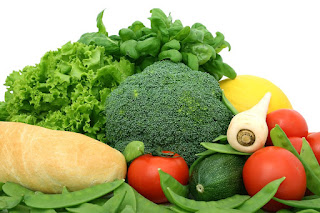What is fibre?
Fibre is an
indigestible form of carbohydrate that is found in both plants and nuts. Some
are soluble making it possible to be absorbed into our body system after
consuming it, while others are not. It is found in
 |
| Image\Pixabay |
There are two
types of fibre. Soluble, and insoluble fibre.
Soluble fibre
is found in many beans and some fruits. It’s called soluble because it
dissolves in water and forms a gel like material in the intestine. This gel
like material binds to fatty acid and bile acid, thus reducing blood
cholesterol level. Soluble fbres help in reducing rate of digestion. When the
digestion process is slowed, it reduces spikes in blood glucose level.
This
helps in regulating body sugar level which is beneficial for people with
diabetes and prevent high sugar level in others.
Several
studies have backed this effects of soluble fibres. This positive effect of
preventing the rapid rise of blood sugar has been shown by many research
studies. Recently, a group of scientists from Warwick Medical School looked at
23 scientific studies done on the effects of fibres on blood cholesterol level
as well as blood pressure.
"aiming for 30g of soluble fibre per day has been proven to reduce blood cholesterol level and help in blood sugar control"
 |
| Image|Pixabay |
They concluded that increasing dietary fibres
improves blood cholesterol as well as surprisingly reducing diastolic blood
pressure. Diastolic blood pressure is
the denominator of the blood pressure reading, and it’s best kept below 90mmHg
to prevent the heart from pumping too hard.
What is the
role of Insoluble Fibre?
while this
form of fibre does not dissolve to be taken into the blood stream it has
benefits on stool formation. One consumed it works in the large bowel by
absorbing water and contributing to ‘bulking the stools’. This relieves
constipation.
Where do we get fibres from?
Best method
of getting the fibre is by eating the food rich in fibre. Recommended fibre
intake by the US Department of Health is 14g per 1000 calorie. This roughly
translates to about 28 to 35g of fibre intake per day, depending on your
calorie intake.
 |
| Image |Pixabay |
So which food
has the highest amount of fibre? Navy beans contain the highest amount of
fibre. According to US Department of Health, cooked navy beans have 9.6g of
soluble and insoluble fibre in half cup.
Apart from fibre, navy beans are also
filled with Vitamin C, Vitamin E and Iron. Chickpeas are also rich in fibres.
It contains 8.1g of fibre in ½ cup.
Locally
available fruits such as papaya and durian are rich in fibre too. Banana
contains 3.1g of fibre in each. Papaya has 2.1g of fibre, and durian has
approximately 1g of fibre in each of its seeds.
As we know ,
soluble fibre is more effective in controlling blood cholesterol level along
with reducing blood sugar. Among fruits, passion fruit has the highest amount
of soluble fibre with 6.5g of fibre per 125ml juice. Avocado contains 2.1 g of
fibre in half fruit.
In conclusion, aiming for
30g of soluble fibre per day has been proven to reduce blood cholesterol level
and help in blood sugar control. Let’s choose fibre rich food to be added in
our diet and live a healthy life!
For Further Reading
US Dietary
Guidelines 2015 –http://health.gov/dietaryguidelines/2015/
Food Sources
rich in soluble fibre, by Dietitians of Canada -
http://www.dietitians.ca/Downloads/Factsheets/Food-Sources-of-Soluble-Fibre.aspx
Systemic
review on dietary fibre’s effect on cardiovascular health
http://www.ncbi.nlm.nih.gov/pubmed/26758499

No comments:
Post a Comment